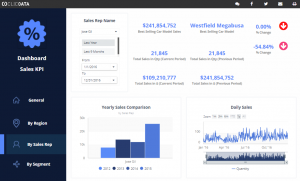One of the best things about working as a Demand Generation consultant is that I get to constantly learn new things. Whether it’s a new industry, product or technology, there are never two days alike and never a lack of things to learn. I also get to meet new people and build long-term relationships with my clients’ marketing and sales teams. The personalities and styles are always different and sometimes, even the culture as we work with global companies. It’s never boring and I’m challenged on a daily basis.
 With all of these learnings and challenges come not only the things I learn about industries and people, but also what I learn about myself. I’ve found that each day is an opportunity to improve and so looking back on 2015, these are my top three lessons learned:
With all of these learnings and challenges come not only the things I learn about industries and people, but also what I learn about myself. I’ve found that each day is an opportunity to improve and so looking back on 2015, these are my top three lessons learned:
1. There will always be someone who isn’t on board-
As a consultant or anyone trying to drive change within an organization, you can sense an aversion to change the moment you step into the room. There’s that one person who is skeptical and wary, or even afraid of the transformation that’s about to take place. If this person is not identified early and managed carefully, they can become a virus, infecting others within the group with their negativity and resistance to change, causing detriment to the whole process
While the temptation may be to ignore or hope and pray this derisive person comes around to our way of thinking by dazzling them with our intelligence and glossy new ideas, that’s the easy – and albeit unsuccessful – way out.
We must work with them and get them to understand and embrace the change, rather than try and work against them. As Carlos Hidalgo explains in his book, Driving Demand, marketing leaders have to carefully shape attitudes by doing the following things:
- Look for the bright spots – call out what has been done right, not just what has been done wrong.
- Celebrate the wins – set milestones and celebrate as you reach them.
- Don’t downplay the change – be realistic about the effort that true transformation is going to require.
If we do these three things, people with negative attitudes might just turn into positive champions.
2. Don’t commit to timelines which involve an unfamiliar piece of technology-
Seems like every day a client or colleague mentions a marketing or sales tool I’m unfamiliar with. These tools all promise to have “native” integration, or “out of the box” functionality, of course.
With all my experience I should have known better. But this past year when a client decided to add not one, not two, but three extra shiny new add-on tools to their technology stack – all of which impacted a program my team was working on– I didn’t push back. I wanted to please my client and more than that, meet my already-published timeline.
So what should I have done? I should have recognized that any new technology has unknowns. This is no slight to the technology vendors. When they tell you something is “out of the box”, it probably is. The difference is that their functionality and what you actually need are likely to be two completely different things. And you won’t know this until you start working with the tool.
I should have pushed harder for my own team to vet the tool instead of depending on my client to assess the functionality as we all have different standards and requirements. Moving forward, I’ll not commit to anything where a new tool is involved until proper vetting has taken place, by my own team.
3. You can always do better-
Just when I thought our presentations couldn’t get any better, I was asked how they resonate with our audience. A new employee with a fresh set of eyes said, “They make sense to you, but do they make sense to the client?” Such a simple and obvious question, yet I hadn’t asked it of myself in years. I wasn’t following my own advice that I give to clients of looking at things from a buyer’s perspective. I had become assimilated into the way we do things internally. I was only looking inwardly, using my own jargon, complex charts and graphs. And the worst part was, I was patting myself on the back for how great they were!
It took a fresh and objective perspective to make me see things in a different light. The light showed me was that there is much room for improvement in not necessarily what I share with clients, but how I share it.
My takeaway from that experience was that I can never rest on my laurels and think something is perfect or complete. I need to gather feedback and constantly push myself and my team to improve on our work because someone always has an idea for how to make things better.
Keep innovating. Looks like it’s going to be a busy year.
Business & Finance Articles on Business 2 Community(20)








